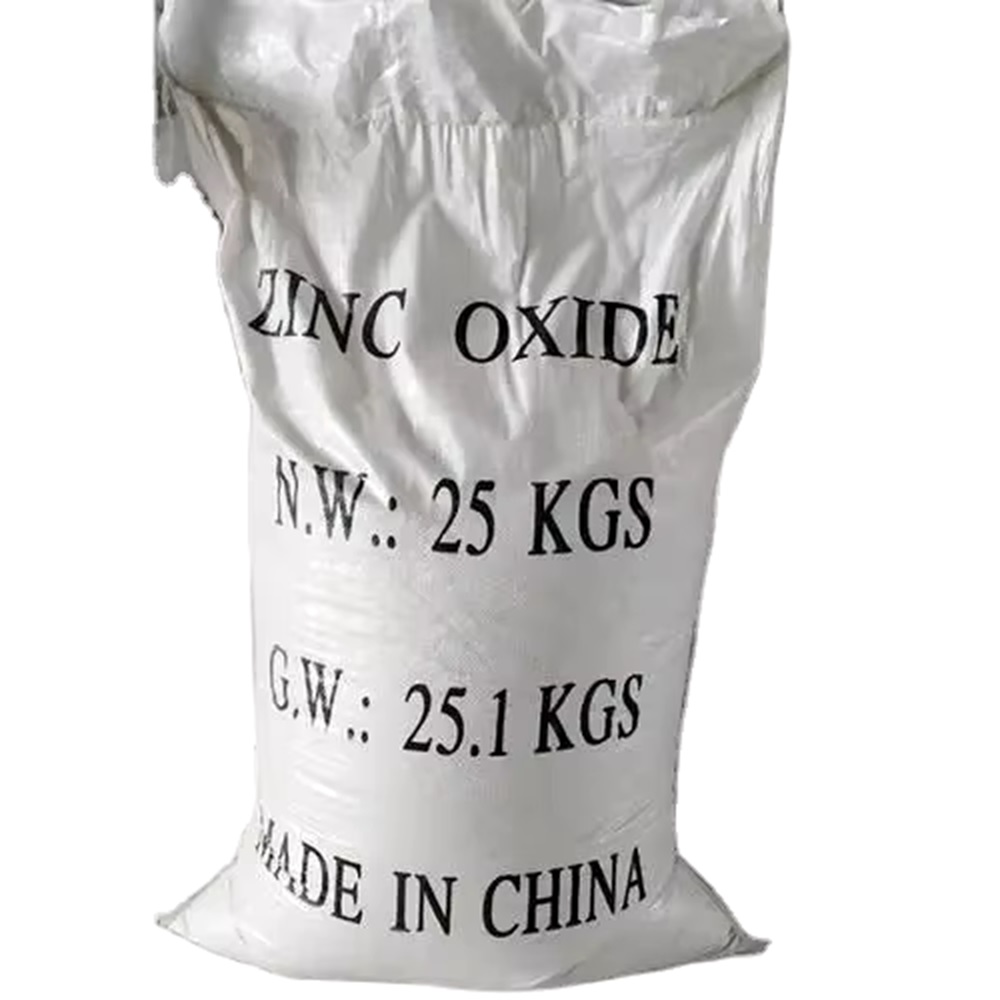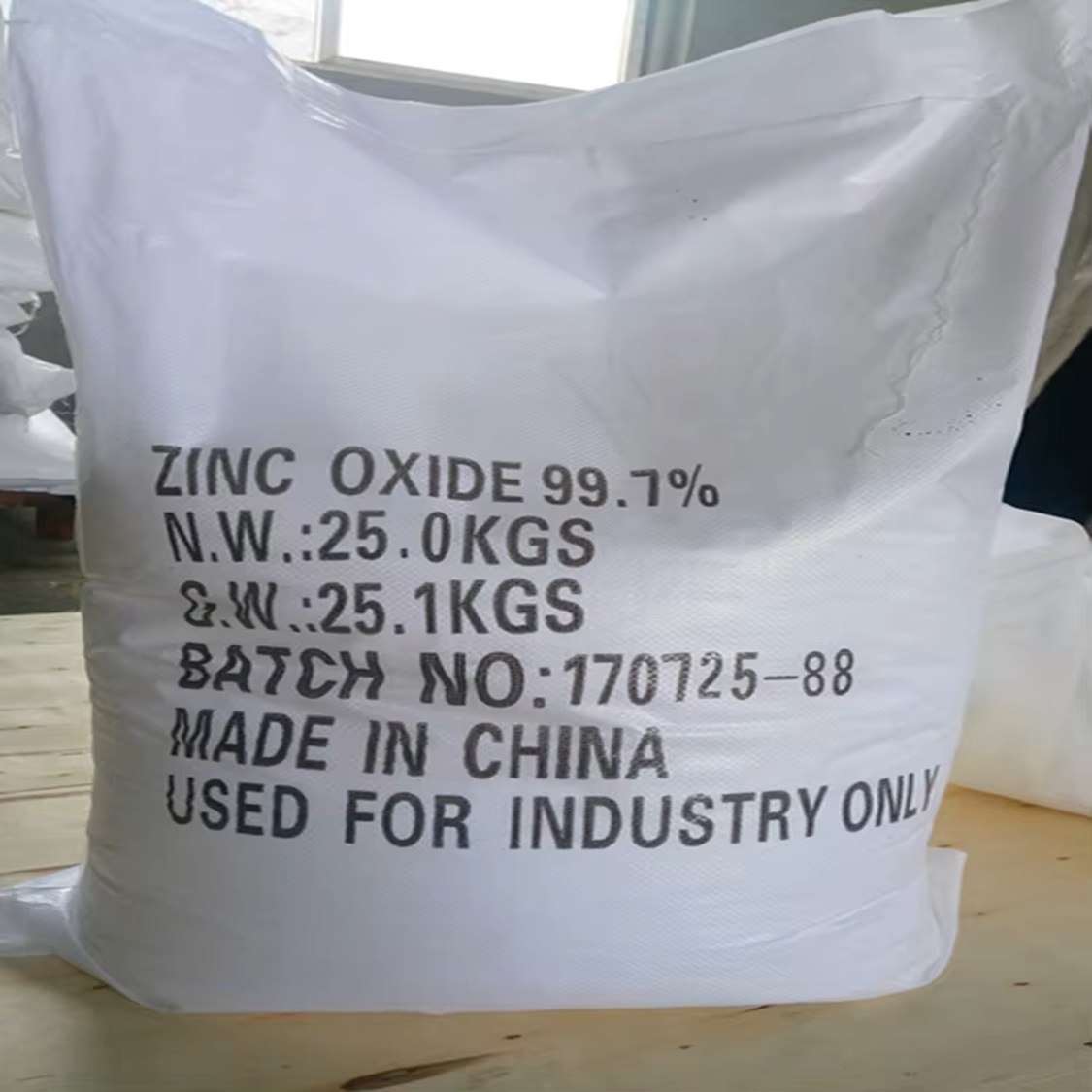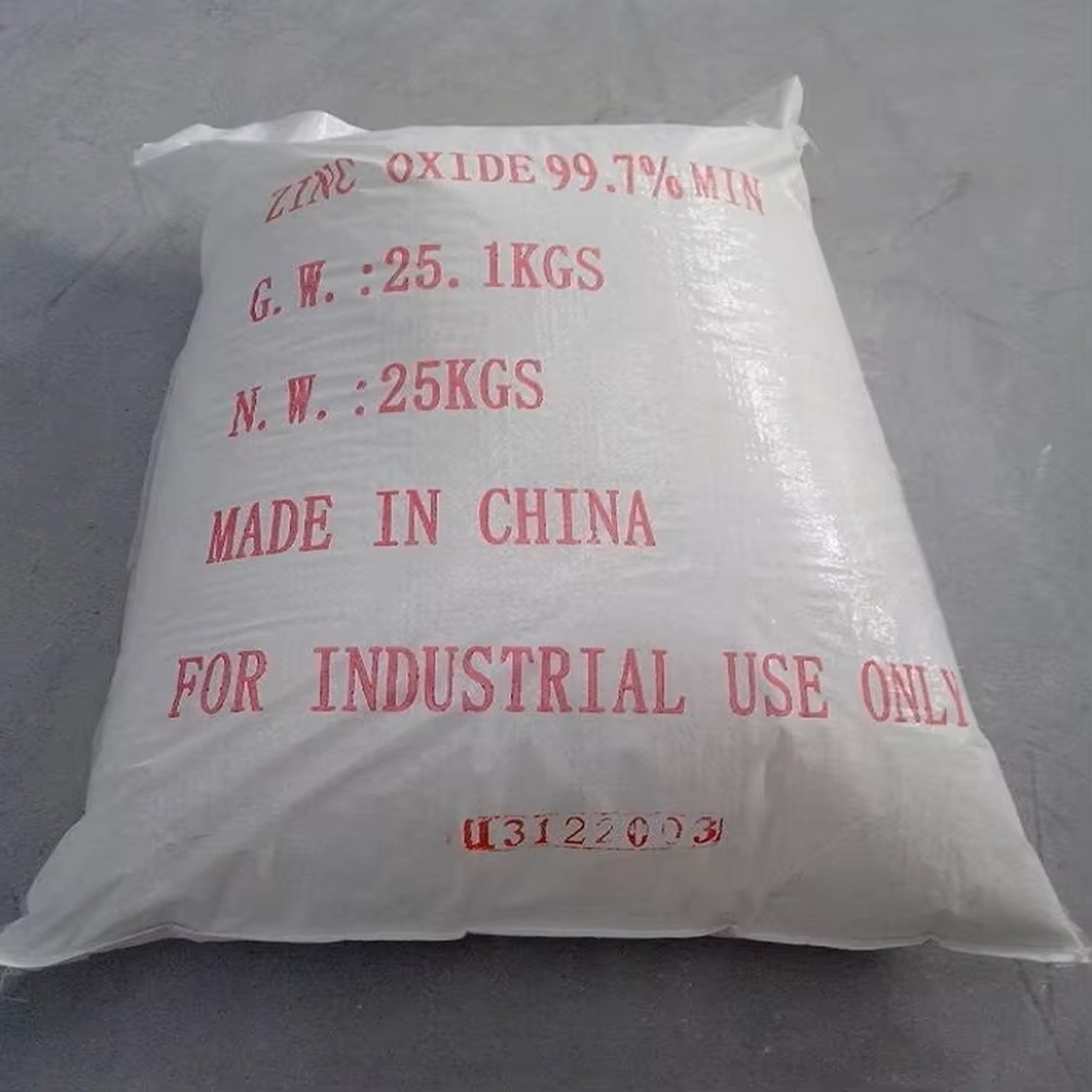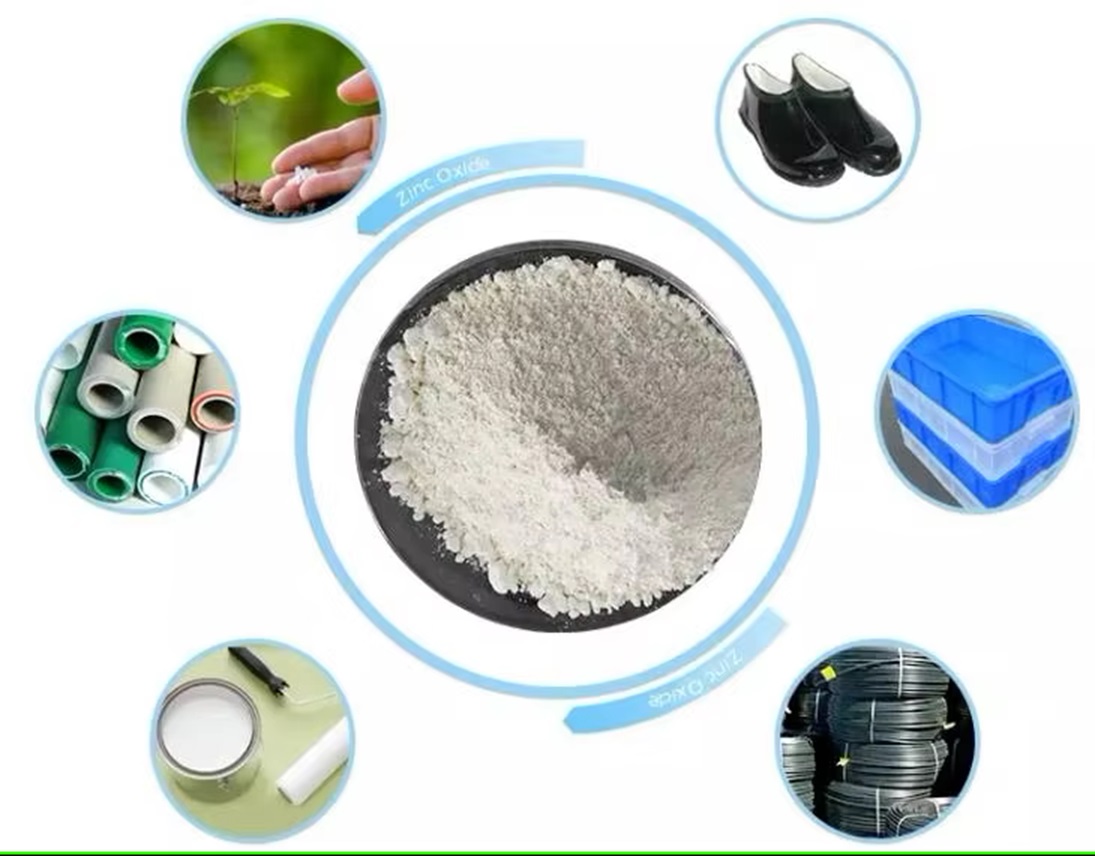We unleash your business potential by maximize the business innovation.
Send EmailZinc Oxide, ZnO, 1314-13-2
-
Basic information
- Product Name: Zinc oxide
- Synonyms: c.i. pigment white 4;ZINKOXYD AKTIV;Zinc white;ZINC OXIDE;ZINCI OXIDUM;Activox;Activox B;actox14
- CAS NO:1314-13-2
- Molecular Formula: OZn
- Molecular Weight: 81.39
- EINECS: 215-222-5
- Product Categories: INORGANIC & ORGANIC CHEMICALS;Inorganic Chemicals;Inorganics;Pharmacopoeial InorganicsMetal and Ceramic Science;Pharmacopoeia (USP);Pharmacopoeia A-ZPharmacopoeia (USP);Metal and Ceramic Science;NanoparticlesMaterials Science;30: Zn;Nanomaterials;Nanoparticles: Oxides, Nitrides, and Other CeramicsMetal and Ceramic Science;Nanopowders and Nanoparticle Dispersions;Organic Conductors and Photovoltaics: OFET and OPV Materials;Organic Photovoltaic (OPV) Materials;ZincNanomaterials;ACS GradeChemical Synthesis;ZincMetal and Ceramic Science;Catalysis and Inorganic Chemistry;Essential Chemicals;Oxides;Routine Reagents;Zinc;T-Z, Puriss p.a. ACSMetal and Ceramic Science;Analytical Reagents for General Use;Puriss p.a. ACS;Reagent PlusMetal and Ceramic Science;Nanoparticles: Oxides, Nitrides, and Other CeramicsChemical Synthesis;metal oxide;nano structured metal oxide;supported metal oxide, catalyst;rubber activator;Agriculture Grade, Electron Grade
- Mol File: 1314-13-2.mol
- Article Data: 0
-
Chemical Properties
- Melting Point: 1975 °C
- Boiling Point: 1949.9°C (estimate)
- Flash Point: 27℃
- Appearance: White to pale yellow/nanopowder
- Density: 5.6
- Refractive Index: 2.008~2.029
- Storage Temp.: Store at +5°C to +30°C.
- Solubility: 0.0016g/l insoluble
- Water Solubility: 1.6 mg/L (29 ºC)
- Stability: Stable. Incompatible with magnesium, strong acids.
- Merck: 14,10147
- CAS DataBase Reference: Zinc oxide(CAS DataBase Reference)
- NIST Chemistry Reference: Zinc oxide(1314-13-2)
- EPA Substance Registry System: Zinc oxide(1314-13-2)
1314-13-2 Usage
Description
Zinc oxide occurs in nature as mineral zincite. It is the most important zinc compound and has numerous industrial applications. Zinc oxide is the pigment in white paints. It is used to make enamels, white printing inks, white glue, opaque glasses, rubber products and floor tiles. It is used in cosmetics, soaps, pharmaceuticals, dental cements, storage batteries, electrical equipment, and piezoelectric devices. Other applications are as a flame retardant, as a UV absorber in plastics, and a reagent in analytical chemistry. A major application of zinc oxide is in the preparation of most zinc salts. In medicine, the compound is used as an antiseptic, an astringent and a topical protectant.
History
Humans have long learned to use zinc oxide as a coating or topical medicine, but the history of human discovery of zinc oxide has been difficult to trace. In the "Chakra" which is Ancient India medical literature recorded in a later identified as zinc oxide drugs, used to treat eye diseases and trauma. The first century AD, the Greek doctor Dioscorides also referred to use zinc oxide to do the ointment. Avicenna completed in 1025 the "Hui prescription" in Zinc Oxide described for the treatment of various skin diseases, including skin cancer drug of choice. Nowadays, people no longer use zinc oxide to treat skin cancer, but still widely used in the treatment of other common skin diseases. As early as 200 BC, the Romans learned how to react with copper and zinc ore containing zinc oxide to make brass. Zinc oxide into zinc vapor in the shaft furnace, rolled into the flue reaction. Dioscorides also introduced this. Since the 12th century, the Indians have known zinc and zinc ore, and began to make zinc using the original way. Zinc smelting technology introduced in China in seventeenth Century. 1743, Bristol, Britain established the first zinc smelting plant in Europe. Another major use of zinc oxide is used as a coating, called zinc white. In 1834, zinc white became the Chinese watercolor paint for the first time, but insoluble in oil. But soon the problem was solved by the new zinc oxide production process. In 1845, Leclerc began to manufacture pigment of zinc white oil painting on a large scale in Paris, to 1850, zinc white popular throughout Europe. The purity of zinc white was so high that some artists painted zinc-white as a background at the end of the nineteenth century, but these paintings were cracked after a hundred years. In the second half of the 20th century, zinc oxide used in the rubber industry. In the 1970s, the second major use of zinc oxide is the additives of copy paper, but in the 21st century, the approach of zinc oxide has been eliminated as a copy paper additive. Figure 1 white zinc oxide powder
Chemical properties
White hexagonal crystal or powder. Tasteless, fine quality. Dissolved in acid, sodium hydroxide, ammonium chloride, do not dissolve in water, ethanol and ammonia.
Uses
Different sources of media describe the Uses of 1314-13-2 differently. You can refer to the following data:
1. ▼▲ Industry Application Role/benefit Rubber Manufacture of rubber Vulcanization accelerator/promotes the vulcanization rate and increases the vulcanization crosslinking degree Anti-aging agent/ protects rubber from fungi and UV light Reinforcing agent/promotes the intensity and thermal conductivity of rubber Ceramic Manufacture of ceramic glaze Fluxing agent/declines the melting point and improves the elasticity of glazes Pigment Paints,rubber,oil painting,paper coatings,ceramic,mineral makeup,etc. White pigment Coatings Metal anti-corrosive coatings Paints additive/helps paints to retain their flexibility and adherence for many years Plastic coatings Anti solar radiation and anti oxidation Energy-saving or heat-protecting windows ZnO:Al coatings selectively lets the visible part of the spectrum in Nuclear reactors Corrosion prevention Reduces the corrosion and minimizes the amount of dissolved materials Desulfurization of chemical raw gas Synthetic ammonia,petroleum,natural gas,methane,etc. Removes hydrogen sulfide by the reaction:H2S + ZnO → H2O + ZnS Medicine Treatment of a variety of skin conditions Active ingredient/antibacterial properties Antiseptic ointments,creams and lotions Common ingredient/deodorizing and antibacterial properties Zinc oxide tape Component/antibacterial properties Ciprofloxacin Additive/enhance the antibacterial activity of ciprofloxacin Food Breakfast cereals, prepackaged foods,etc. Additive/source of zinc Animal feed Others Cigarette filters Helps to removes significant amounts of HCN and H2S from tobacco smoke without affecting its flavor Suntan lotion and UV-blocking sunglasses Key ingredient/provides strong protection against UVA and UVB ultraviolet radiation Zinc oxide nanorod sensor Detects changes in electric current passing through zinc oxide nanowires Li-ion battery Anode material/ high theoretical capacity;cheap and environmental friendly Self-powered nanosystems Stretching and releasing zinc oxide nanowires can deliver alternating current Ferromagnetic material ZnO can become ferromagnetic after being doped with 1–10% of magnetic ions Laser diodes and light emitting diodes Wide direct band gap and larger exciton binding energy Organic synthesis Catalyst Calibration of ethylenediamine tetraacetic acid disodium Reference agent
2. Zinc oxide is added to paints as a pigment and mold inhibitor and is known as zinc white when it is used as an oil paint by artists. It is used for cosmetics (ointment to protect nose and lips from ultraviolet sunlight), as a seed treatment, and as a dietary supplement.
3. Zinc oxide, ZnO, is a reactive white pigment prepared by vaporizing metallic zinc at a temperature of about 900°C in the presence of oxygen. As a pigment, ZnO is basic in nature and can react with certain types of acidic paint resins resulting in the formation of a brittle film on drying. Formation of such films leads to premature failure of paint. For this reason as well as because of its low RI,ZnO cannot compete for the hiding power of TiO2. Consequently, ZnO is rarely used as the sole pigment in modern coatings, although it finds some use in admixture with other pigments. ZnO is used in exterior house paints as a fungicide and in some can linings as a sulfide scavenger.
4. Antibiotic
5. Preparation of zinc standard solutions.
6. zinc oxide has been used to protect, soothe, and heal the skin. Zinc oxide provides an excellent barrier to the sun and other irritants. It is somewhat astringent, anti-septic, and anti-bacterial. When used in sunscreen preparations, it provides both uVA and uVB protection, and can contribute to and/or increase SPF. At the appropriate particle size, zinc oxide is transparent in the visible light spectrum but opaque in the uVC ranges, thereby avoiding a whitening effect when incorporated into sunscreen preparations. Zinc oxide is included on the FDA’s list of approved sunscreen chemicals. It demonstrates an impressive synergistic effect when combined with organic sunscreens. Zinc oxide is also used when a white color is desired for a product. It is obtained from zinc ore, a commonly found mineral, and is relatively non-allergenic.
Reactions
Zinc oxide reacts with mineral acids to yield corresponding zinc salts when the solution is evaporated. Thus, with sulfuric acid it forms zinc sulfate (hydrated): ZnO + H2SO4 → ZnSO4 + H2O Reactions with organic acids such as acetic or propionic acid yields zinc acetate, (CH3COO)2Zn, or zinc propionate, (CH3CH2COO)2Zn, upon concentration. Fusion of zinc oxide with fatty acids at elevated temperatures produces fatty salts. Thus, fusion with oleic or linoleic acid forms zinc oleate, Zn(C17H33COO)2, or zinc linoleate, Zn(C17H31COO)2. Reaction with tellurium powder in alkaline solution yields red crystalline zinc telluride, ZnTe. Zinc oxide reacts with potassium dichromate in solution in the presence of sulfuric acid to form a greenish-yellow pigment, zinc yellow or citron yellow [11103-86-9], 4ZnO?4CrO3?K2O?3H2O.
Identification test
When the heat appears yellow, cooling disappeared。 The sample solution prepared with 3 mol/L hydrochloric acid was positive for the zinc test (IT-33).
Content analysis
Accurately weighed just burned sample residue about 1.5g, with ammonium chloride 2.5G, dissolved in 50.0Ml0.1mol/L sulfuric acid (a small fire heating). To be completely dissolved, add a few drops methyl orange test solution (TS-148), with 1mol/L sodium hydroxide solution titration of excess sulfuric acid. Ml 1mol/L sulfuric acid equivalent to zinc oxide (ZnO) 40.69mg.
Toxicity
toxicity 1 GRAS(FDA,§182.8991,2000). LD50240ragkg(Rats,Abdominal injection)。 toxicity 2 Poisoning will appear poor appetite, polydipsia, fatigue, chest tightness and tenderness, drowsiness, dry cough, and there will be elevated body temperature, pupil dilatation, conjunctiva and pharynx, facial congestion, diabetes, also sometimes hepatomegaly. In severe cases pulmonary interstitial edema, alveolar epithelial damage. Poisoning can be inhaled alkaline substances, intravenous injection of glucose (40% solution 20ml) and 300mg ascorbic acid. According to symptoms taking tonic. The maximum allowable concentration in the air 0.5 mg/m3. In the operation should wear protective masks, protective glasses, wear overalls. Hot water bath after work. Attention should be paid to prevent the formation of vapor and aerosols and discharge to the air in the workplace. Should pay attention to dust ventilation.
Production Methods
(1) At present, used methods are the indirect method for zinc ingots as raw materials (also known as the French law), zinc ore as raw material direct method (also known as the United States) and wet. Indirect method. Reaction equation:2ZnO+O2→2ZnO Operation method: The zinc ingots produced by the electrolysis method are heated to 600-700 ° C and melted, placed in a high temperature crucible, melted and vaporized at a temperature of 1250-1300 ° C, introduced into hot air for oxidation, and the resulting zinc oxide is cooled, cyclone separation, the fine particles with a bag to collect, that is, zinc oxide products. Direct method. Reaction equation: C+O2→CO2 CO2+C→CO ZnO+CO→Zn(Steam)+CO2 Zn(Steam)+CO+O2→ZnO+CO2 Operation method: Roasted zinc ore powder (or zinc material) and anthracite (or coke quietly), limestone formulated into a ball in the ratio of 1: 0.5: 0.05. After reduction and smelting at 1300 ℃, the zinc oxide in the ore powder is reduced to zinc vapor, then oxidized by air, and the produced zinc oxide is collected to obtain the zinc oxide product. Wet method. Zinc sulfate and sulfuric acid reaction to get zinc sulfate, and then reaction with sodium carbonate and ammonia respectively, the obtained zinc carbonate and zinc hydroxide were used as raw materials to produce zinc oxide.The reaction equation is as follows: Zn+H2SO4→ZnSO4+H2↑ ZnSO4+Na2CO3→ZnCO3+Na2SO4 ZnSO4+2NH3?H2O→Zn(OH)2+(NH4)2SO4 Using zinc carbonate as raw material, after washing, drying, calcining and crushing to obtain products of Zinc Oxide. ZnCO2→ZnO+CO2↑ With zinc hydroxide as raw material, after washing, drying, calcination, precipitation, cooling and crushing to obtain products of Zinc Oxide. Zn(OH)2→ZnO+H2O ? (2) Basic zinc carbonate calcination method: production methods of active zinc oxide are more, Most of the low-grade zinc oxide or zinc ore as raw materials, and reaction with dilute sulfuric acid solution, made of zinc sulfate solution, the solution heated to 80~90 ℃, removing iron and manganese with joining Potassium Permanganate oxide, and then heated to 80℃, adding zinc, replacing the liquid copper, nickel, cadmium, after replacement, for second oxidation removal of impurities with Potassium Permanganate in 80 to 90℃, refined zinc sulfate solution, use soda ash and, until the pH value is 6.8, the formation of basic zinc carbonate, filtered, rinsed to remove the sulfate and excess alkali, and then dried and calcined at 500~550 ℃ to get active zinc oxide. ZnO+H2SO4→ZnSO4+H2O 3ZrSO4+3Na2CO3+3H2O→ZnCO3.2Zn(OH)2.H2O+3Na2SO4+2CO2↑ ZnCO3.2Zn(OH)2.H2O→3ZnO+C02++3H2O
Chemical Properties
Different sources of media describe the Chemical Properties of 1314-13-2 differently. You can refer to the following data:
1. Zinc oxide is an amorphous, white or yellowish-white powder. Odorless.
2. Zinc oxide is yellowish and powder like.
Physical properties
White or yellowish-white powder; odorless; bitter taste; hexagonal crystal; refractive index 2.008; density 5.606 g/cm3; melts at 1,975°C; practically insoluble in water, 1.6 mg/L at about 30°C; soluble in dilute acids, ammonia solu 990 tion, and alkali hydroxides.
Definition
Different sources of media describe the Definition of 1314-13-2 differently. You can refer to the following data:
1. zinc oxide: A powder, white whencold and yellow when hot, ZnO; r.d.5.606; m.p. 1975°C. It occurs naturallyas a reddish orange ore zincite,and can also be made by oxidizinghot zinc in air. It is amphoteric,forming zincates with bases. It isused as a pigment (Chinese white) and a mild antiseptic in zinc ointments.An archaic name is philosopher’swool.
2. Zincite is a mineral form of zincoxide, ZnO.
Preparation
Zinc oxide is obtained as an intermediate in recovering zinc from minerals (See Zinc, Recovery). The oxide is prepared by vaporizing zinc metal and oxidation of the zinc vapors with preheated air (French process). The oxide can be produced by other processes. Another method involves roasting franklinite and other ores with coal and then oxidizing the product in air.
Application
ZnO is used primarily for its anti-bacterial and fungicidal properties. Also, in the United States, ZnO is regarded as a Category I skin protectant and a Category III sunscreen.
General Description
Crude zinc oxide is a yellow-gray granular solid with no odor. Zinc oxide has a specific gravity of 4.4. Zinc oxide is insoluble in water. The primary hazard is the threat posed to the environment. Immediate steps should be taken to limit its spread to the environment. Prolonged inhalation of the dust may result in metal fume fever with symptoms of chills, fever, muscular pain, nausea and vomiting.
Air & Water Reactions
Slowly decomposed(hydrolyzed) in water. Insoluble in water.
Reactivity Profile
ZINC OXIDE is insoluble in water. What little solubility Zinc oxide has yields aqueous solutions that are neutral in pH. Intimate mixtures of zinc oxide and chlorinated rubber with or without hydrocarbons or chlorinated solvent react violently, even explosively upon heating [Chem. Trade J., 1962, 151, 672]. Slow addition of zinc oxide to cover the surface of linseed oil varnish caused generation of heat and ignition, [Chem. Trade J., 1933, 92, 278].
Hazard
Exposure to zinc oxide fumes from welding and other operations can cause metal fume fever. Its symptoms are chills, fever, cough, and tightness in the chest.
Health Hazard
Exposures to zinc oxide metal fume cause several health disorders. The symptoms of toxicity include, but are not limited to, fever, chills, muscle ache, nausea, fever, dry throat, cough; lassitude (weakness, exhaustion), metallic taste, headache, blurred vision, low back pain, vomiting, malaise (vague feeling of discomfort), chest tightness, dyspnea (breathing diffi culty) and decreased pulmonary function. The overexposure to zinc oxide fumes in workplaces produce symptoms known as metal fume fever or “zinc shakes”; an acute, selflimiting condition. Chronic exposure to zinc oxide may cause respiratory tract irritation with nasopharyngitis and laryngitis.
Fire Hazard
Some may burn but none ignite readily. Containers may explode when heated. Some may be transported hot.
Pharmaceutical Applications
The pharmaceutical and cosmetic industries use ZnO in powders and ointments because of its bactericidal properties. It is also used to form dental cements by its reaction with eugenol. Zinc oxide is used as a raw material for many products: stearates, phosphates, chromates, bromates, organic dithiophosphates, and ferrites (ZnO, MnO, Fe2O3). It is used as a source of zinc in animal feeds and in electrogalvanization . It is also used for desulfurizing gases.
Agricultural Uses
Zinc oxide (ZnO) is a zinc fertilizer. It is a white powder when cold and yellow when hot, and contains approximately 78% zinc. Zinc oxide occurs in nature as a reddish-orange colored zincite, and is made by oxidizing hot zinc in air. It is an amphoteric oxide forming zincates, by reacting with bases and zinc salts with acids. It is used as a white pigment and as a mild antiseptic in ointments. An archaic name of zinc oxide is philosopher's wool. Foliar applications with zinc oxide reduce the foliage damage. Zinc oxide, applied by way of seed coatings, root dips or tree injections, corrects the zinc deficiency. Dipping potato seeds in 2% zinc oxide suspension overcomes zinc deficiency satisfactorily. A similar method is used for pre-plant dipping of the roots of rice seedlings.
Industrial uses
Zinc oxide has many uses. By far the most important is in the rubber industry. Almost half the world’s ZnO is used as an activator for vulcanization accelerators in natural and synthetic rubber. The reactivity of the ZnO is a function of its specific surface area, but is also influenced by the presence of impurities such as lead and sulfates. The ZnO also ensures good durability of the vulcanized rubber, and increases its thermal conductivity. The ZnO content is usually 2–5%. In paints and coatings, zinc oxide is no longer the principal white pigment, although its superb white color is used by artists. It is used as an additive in exterior paints for wood preservation. It is also utilized in antifouling and anticorrosion paints [2.82]. It improves film formation, durability, and resistance to mildew (having a synergistic effect with other fungicides) because it reacts with acidic products of oxidation and can absorb UV radiation. In the field of glass, ceramics, and enamels, ZnO is used for its ability to reduce thermal expansion, to lower the melting point, and to increase chemical resistance. It can also be used to modify gloss or to improve opacity.
Materials Uses
The highest purity material is calcined with additives such as Bi2O3 and used in the manufacture of varistors. The photoconducting properties of ZnO are used in photoreproduction processes. Doping with alumina causes a reduction in electrical resistance; hence, it can be used in the coatings on the master papers for offset reproduction. Zinc oxide is used as a catalyst in organic syntheses (e.g., of methanol), often in conjunction with other oxides. It is present in some adhesive compositions.
Safety Profile
Moderately toxic to humans by ingestion. Poison experimentally by intraperitoneal route. An experimental teratogen. Other experimental reproductive effects. Human systemic effects by inhalation of freshly formed fumes: metal fume fever with chills, fever, tightness of chest, cough, dyspnea, and other pulmonary changes. Mutation data reported. A s h and eye irritant. Has exploded when mixed with chlorinated rubber. Violent reaction with Mg, linseed oil. When heated to decomposition it emits toxic fumes of ZnO. See also ZINC COMPOUNDS.
Synthesis
Zinc ore is roasted and purified at 1000°C. The two methods of manufacture are (1) French, an indirect method and (2) American, a direct method. ZnO is in the form of transparent hexagonal crystals. The refractive index of this material is 2.0 with whiteness due to the scattering of light by the ultrafine particles. The coverage on the skin of ZnO is subordinate to that of TiO2.8 This material is soluble in acid and alkali with good heat and light stability.
Potential Exposure
Zinc oxide is primarily used as a white pigment in rubber formulations and as a vulcanizing aid. It is also used as an antiinflammatory agent; in photo copying; paints, chemicals, ceramics, lacquers, and varnishes; as a filler for plastic; in cosmetics; pharmaceuticals, and calamine lotion. Exposure may occur in the manufacture and use of zinc oxide and products, or through its formation as a fume when zinc or its alloys are heated. HC may have been used as a Choking/Pulmonary Agent.
Carcinogenicity
In general, genotoxic studies have not found evidence for mutagenicity of zinc.





